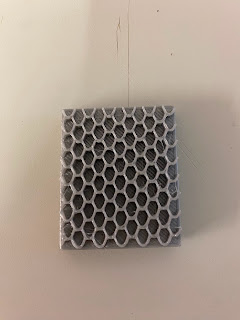Lace Collars
Lace Collar
Throughout my research into lace and its history, I was fascinated by the idea of lace collars. Not only were they worn to adorn the necks of the upper classes and royalty, they were also worn by religious figures and even some of the middle classes. The difference between the lace designs and intricacies were vast, but the idea of a single item that highlighted the wearers class, position or wealth remained constant.
Lace collars, particularly those worn by the more 'lower' class, were often pieces by their own right. They were made separate from the clothing, allowing them to be removed and worn with multiple different outfits. This allowed lace to be more economical, and easier for ordinary people to own. This type of collar was called a 'pin-on' collar. The cheaper the lace collar, the less detailed and intricate it would be, however owning even a simple design would give the appearance of wealth and power to others.
Types of Lace Collar
There were many different designs and styles for lace collars throughout time, but there are three main categories for them. These are Pin-on, Drape on, and attached collars.
Pin-on Collars
These collars were the most popular for the lower and less wealthy classes. They were made separately to clothing garments and so could be worn with any outfit the wearer chose. They are adaptable and economically friendly, allowing the owner to purchase only one collar, and use it to alter and raise the perceived quality and price of the outfit.
Drape on Collars
These collars were a lot larger than the previous 'pin-on' collars, which allowed them to draped around the neck and shoulders without them falling off. They were more common for younger children than adults as they were easily replaced or adapted when the child outgrew them.
Attached Collars
These collars were a lot less adaptable as they were a part of a specific garment. Due to this, they were mostly worn by the wealthy upper class. They were commonly fitted to blouses, with the collar being brought up over the edges of the outer layers such as jackets or dresses.
Within this category however there is till a clear difference between classes. When fitted to a blouse, they were more adaptable for the wearer. They could wear the same blouse with multiple dresses or jackets and so were worn more by the lower levels within the wealthy classes.
Collars which were fitted to the main garment (dresses, jackets etc) were worn almost exclusively by royalty or other people with extreme wealth.


Elizabethan Collar
When talking about lace collars, it's impossible to ignore elizabethan collars. They are easily identifiable by their stiff, upright and ruffled appearance and they dominated fashion of the wealthy during the late 16th and 17th centuries.


These collars were incredibly time consuming to produce, each collar went the processes of looping, ironing and starching in order for the collar to retain the shape it was designed to. The ruffs (the folds that give the collar its height) reappeared throughout history in many forms including modern runways and has become a stylistic embellishment rather than a symbol of Elizabethan society and politics.
Although members of all classes wore ruffs for fashion, they didn't allow for much movement for the wearer, including manual labour. As a result, the most elaborate and stiffer ruffled collars were primarily worn by the wealthy. The Elizabethan collar therefore was a huge way to highlight the wearer's importance, as by wearing the collar, they were showing everyone that they didn't have to perform these common tasks.
The ruffs also affected the wearer's posture, whilst worn they had no choice but to keep their heads up, demonstrating confidence and pride. Although these ruffs started to evolve into both more extravagant and also more 'tame' over time, the collars undoubtably contributed to many decades and centuries of fashion, including in modern society.







Comments
Post a Comment